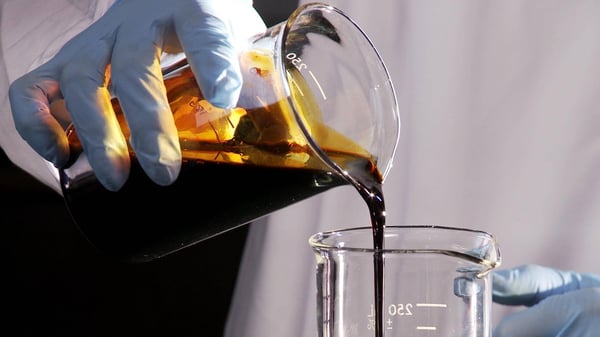Hydraulic fluid contamination is the number one cause of hydraulic system failure and as such it’s a serious concern for maintenance managers everywhere. Hydraulic systems can become contaminated in a number of ways - including poor system design, lack of maintenance or improper maintenance procedures and other contributing factors. In this article, we’ll discuss 7 causes for hydraulic fluid contamination that you may not have considered and provide you with some information that will help you to keep your hydraulic system clean.
7 Causes Of Hydraulic Fluid Contamination

- Hydraulic fluid contamination due to poor hydraulic system design.
The design of the hydraulic system plays a large role in ensuring contamination is kept to a minimum. Things like improper valving, poorly-located breathers, insufficient filtration, insufficient wiper seals and other design characteristics can allow external debris to enter the system. In addition, if the system is not designed to allow for correct routine maintenance, this will also have an impact on the maintenance that takes place. For example, if hydraulic fluid reservoirs are difficult to access, or cannot be drained fully, it may make it impossible to fully flush and replace old hydraulic fluid. - Hydraulic fluid contamination due to poor quality hoses and fittings.
Substandard hoses and fittings may increase contamination through the use of low quality metals or materials. Depending on the industry and application, certain fittings and components may not withstand the environmental conditions, which can lead to increased corrosion and risk of contamination. - Hydraulic fluid contamination as a result of component failure.
Any time a component fails, the increased friction and damage introduces more metallic particles that are created as the component wears, which presents an increased risk of contamination. For this reason, if you need to replace a part, inspect hoses, lines, cylinders and valves for evidence of wear and particles from the failed unit. In addition, it’s a good idea to flush the entire system and add new, filtered fluid any time a component needs to be changed - Hydraulic fluid contamination when changing system components.
The new components may be a source of contamination themselves. Some components are manufactured in factories that are less than hygienic and sometimes contamination can occur during packing, transport or storage. Therefore it is important to clean and prepare new system components before fitting them to the system. In addition, the act of removing a component from the system and replacing it with another is also an opportunity for debris and impurities to enter the system. Removing parts from a dirty machine is an open invitation for contamination to take place. For this reason it’s a good idea to clean and prepare the system before removing parts that are to be replaced in order to minimise the likelihood of dirt or debris entering the system. - Hydraulic fluid contamination when replacing or adding hydraulic fluid.
As with the points above, any time you open the hydraulic system to change hydraulic fluid, it’s another opportunity for contaminants to make their way inside where they can wreak havoc. So it’s important that you take care to follow careful cleanliness procedures when you perform this task. In addition, it’s important to properly flush the system of the old fluid before you introduce new clean fluid. Failing to do so will result in new fluid mixing with old contaminated oil. - Hydraulic fluid contamination through dirty breathers.
Breathers are an obvious point of entry for contamination. If the environment contains airborne particulates, faulty breathers can permit these to enter the hydraulic system. As such, care should be taken to replace dirty, clogged breathers as part of your routine maintenance schedule - Hydraulic fluid contamination due to damaged or worn cylinder seals
Hydraulic cylinder seals are particularly vulnerable to damage and represent a significant point for contamination to take place. Many earth moving machines operate in all weather conditions, and in muddy, dirty environments, which means that their cylinder seals are under constant threat. Over time, cylinder seals may become hard and brittle and lose their effectiveness at keeping contaminants out. Contaminated fluid then migrates into the machine and causes more long-term, expensive damage. For this reason, you should always keep up with regular hydraulic cylinder overhauls in order to protect the overall health of your hydraulic machines.
Hydraulic fluid is always at risk of contamination and sometimes these risks are not as obvious as they may seem. To reduce maintenance costs and downtime, it pays to be aware of all the possible points of contamination so you can reduce the contamination levels and get more out of your fluid and. Of course proper proactive maintenance is the best practice when it comes to ensuring long term reliability and performance.







Leave A Comment